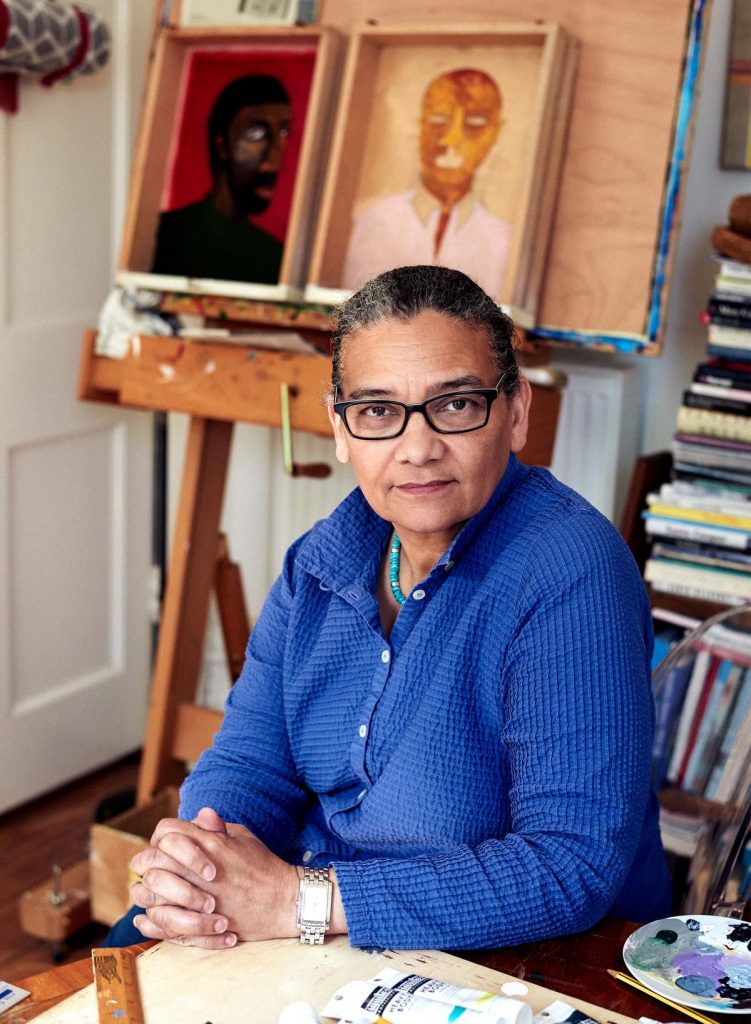Laura Knight in 5 Paintings: Capturing the Quotidian
An official war artist and the first woman to be made a dame of the British Empire, Laura Knight reached the top of her profession with her...
Natalia Iacobelli 2 January 2025
Winner of prestigious awards, including the Turner Prize, Lubaina Himid has a long and prolific career as an artist, curator, and teacher. Her art inspires conversations around themes of representation, identity, and colonization. An essential name in British contemporary art, she highlights the contributions of Black populations to history in paintings, installations, and collages.
Lubaina Himid CBE RA (b.1954) is a British artist, curator, and educator. Born in Zanzibar, Tanzania, she was four months old when her family moved to Britain. Her mother was a textile designer who exposed Himid from an early age to art and design when visiting department stores and museums together. These visits would have a profound impact on the artist’s formation and sensibility towards colors, patterns, and textures.

Artist Lubaina Himid, photo by Kasia Bobula. Harper’s Bazaar UK.
With studies in Theatre Design and Cultural History, Himid was one of the first artists involved with the Black Arts Movement of the 1980s. She organized and curated influential exhibitions including The Thin Black Line, at the Institute of Contemporary Arts, London in 1985, and Into the Open, at Mappin Art Gallery, Sheffield in 1984. The latter is considered the first major exhibition to showcase a new generation of Black Artists in Britain.
Representation and identity are underlying themes in Himid’s practice which involves painting, collages, installations, and interventions. In an interview for Katy Hessel’s The Great Women Artists podcast, she speaks about how her work is infused with layers of meaning and the intention of changing the object’s function when painting over them, highlighting their history.
Himid declares herself “a painter and a cultural activist” therefore giving voice to the stories of black people that were usually represented as background characters in a scene but never as protagonists. Through her work, she draws attention to the contributions of racialized and colonized populations to history, particularly in the United Kingdom.
One can see the influence of her childhood exposure to textile design in Himid’s mastery of color and use of patterns which she applies to a variety of surfaces with striking results. Naming the Money, 2004, A Fashionable Marriage, 1986, and Jelly Mould Pavilions for Liverpool, 2010, are wonderful examples.
Himid’s long trajectory and contributions to contemporary art in Britain were finally recognized in 2010 when she was appointed MBE “for services to Black Women’s Art”, CBE in 2018, “for services to Art” and in the same year, a Royal Academician, by the Royal Academy of Arts in London. In addition to these honors, in 2017 she won the prestigious Turner Prize, a yearly prize awarded to British artists, becoming the first Black woman to win it. Furthermore, in 2021, Tate Modern in London organized an acclaimed solo exhibition of Lubaina Himid’s works. It was the biggest retrospective of her prolific career to date.
DailyArt Magazine needs your support. Every contribution, however big or small, is very valuable for our future. Thanks to it, we will be able to sustain and grow the Magazine. Thank you for your help!